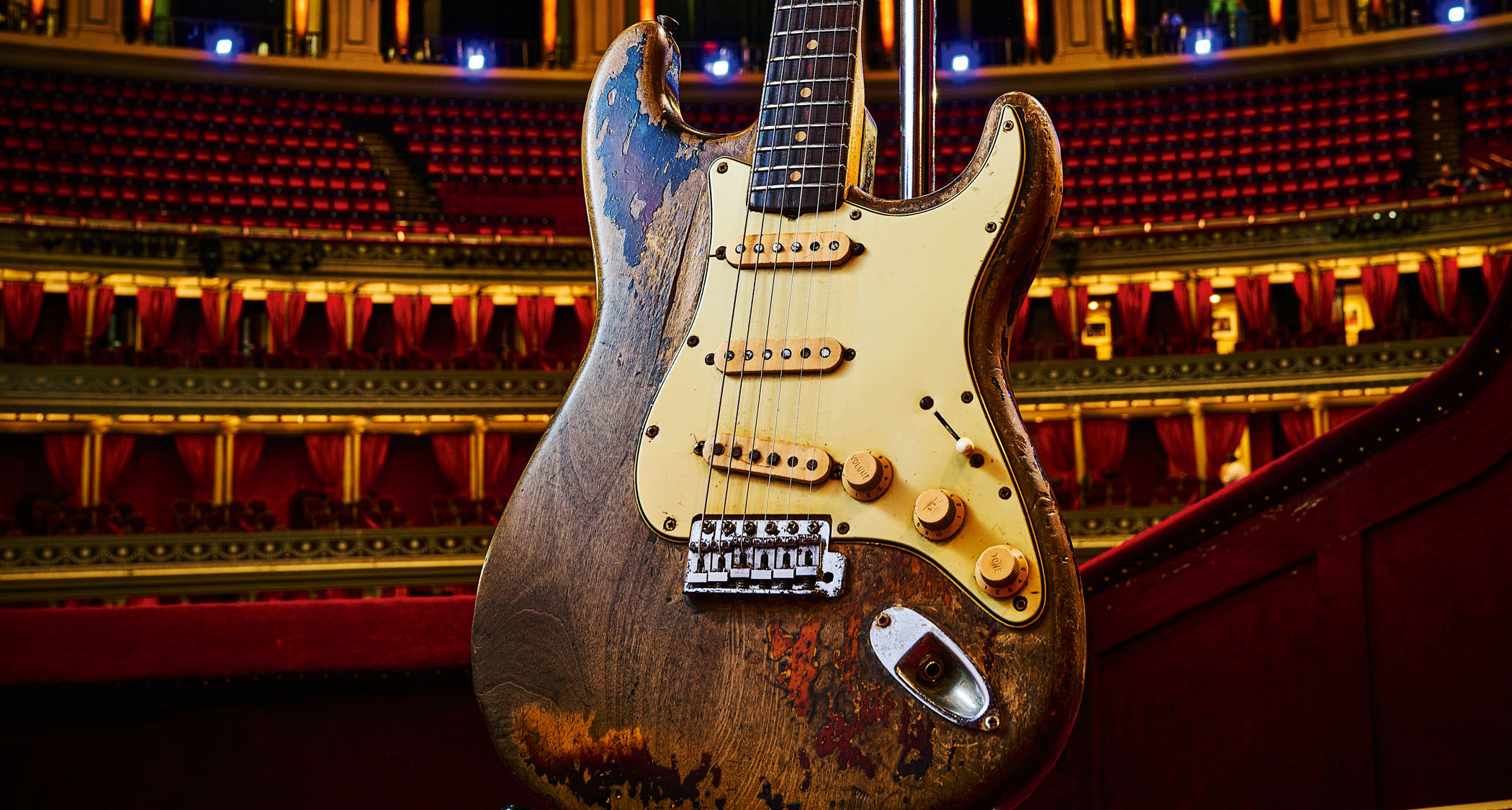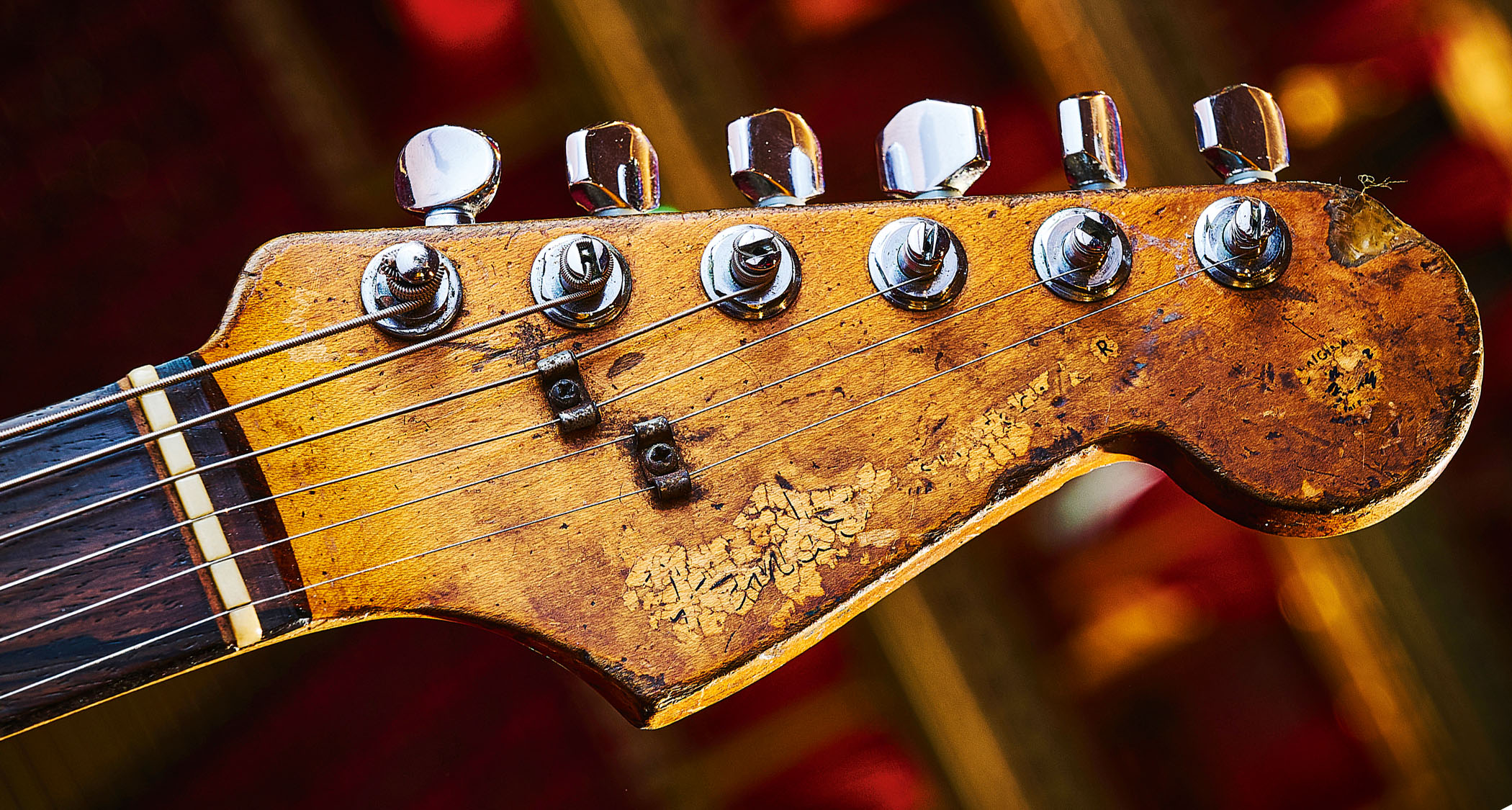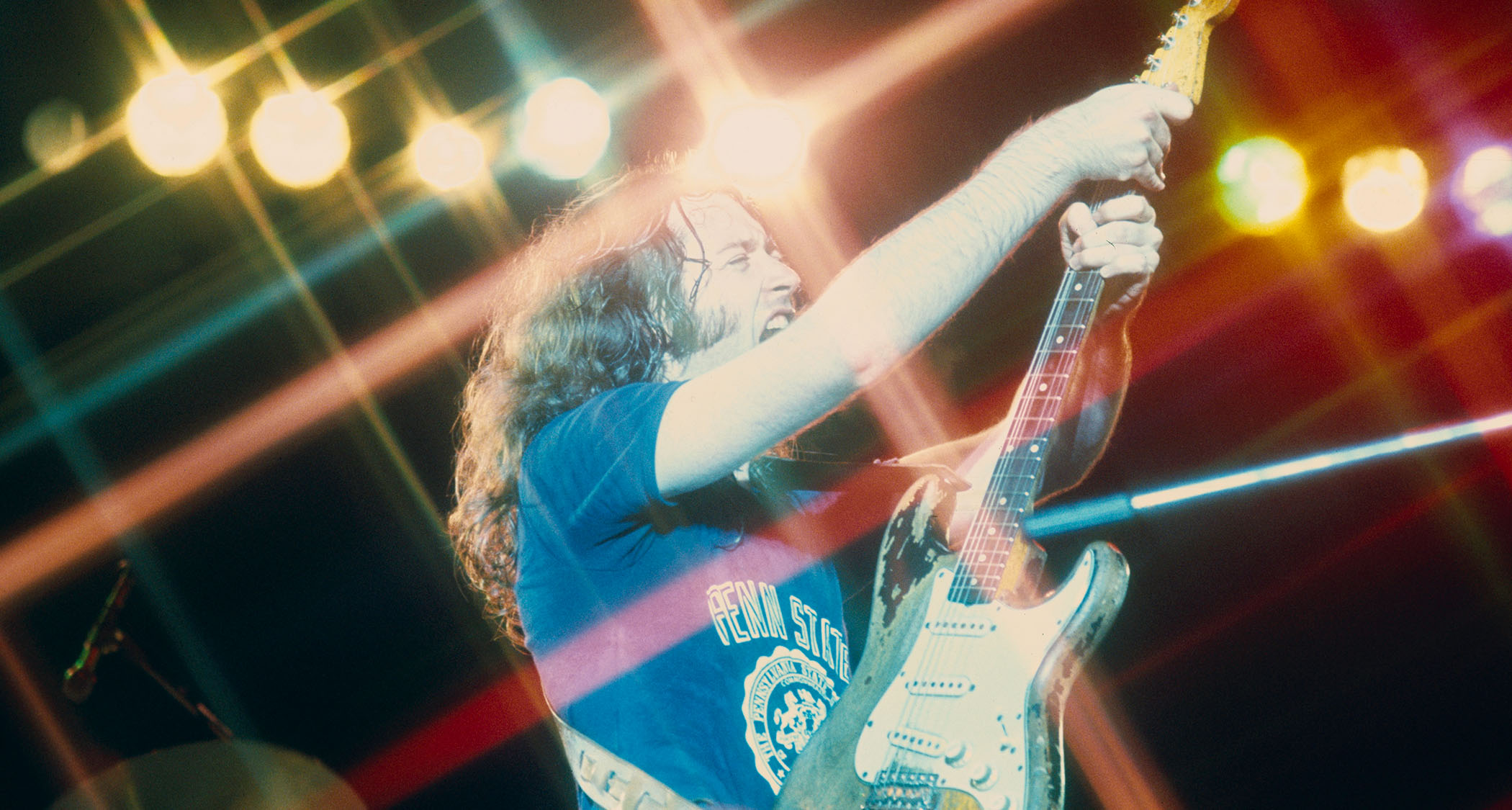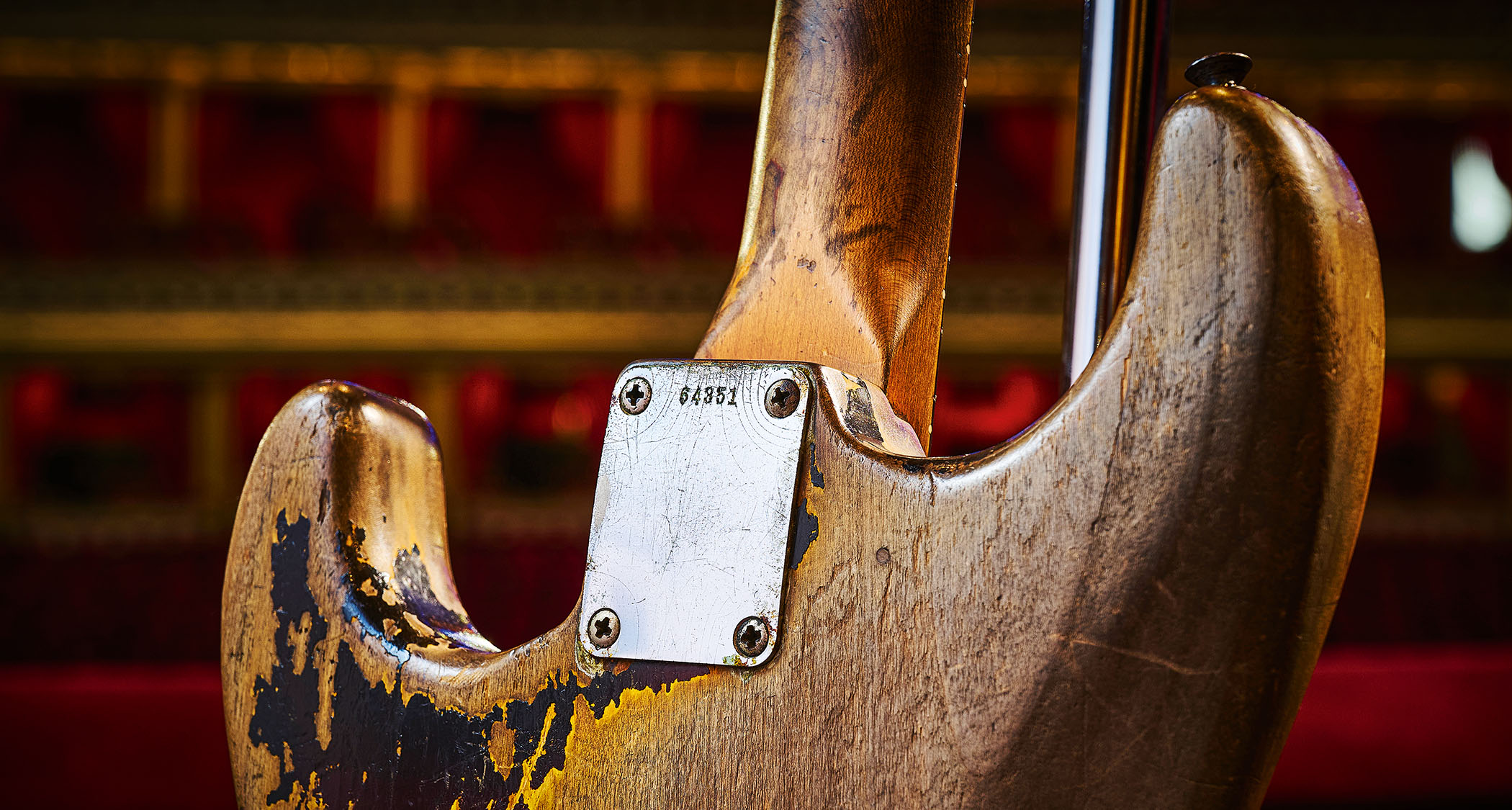“It’s so difficult. The guitar has got a life of its own and it’s got to move on”: Why Rory Gallagher’s iconic Strat is up for auction now – and the political pressure to keep it in Ireland
Nearly 30 years after Rory Gallagher’s death, we join Rory’s brother Donal to find out why it’s time to let go of his legendary 1961 Fender Stratocaster as it heads to auction

Rory Gallagher’s ’61 Stratocaster is one of the most iconic guitars of all time. Fender’s Custom Shop replica of it is a good guitar, make no doubt, but no craftsperson could truly recreate what that guitar has been through, where it’s travelled and what it represents.
Bought in Crowley’s music store in Cork when Rory was just 15, the guitar was purchased when his mother took a leap of faith to underwrite the hire-purchase agreement for an instrument that was, at the time, beyond the means of most pro musicians.
And yet how he repaid her trust – the 14 solo albums that Rory recorded before his untimely death in 1995 remain a benchmark for all guitar players. Not only for the headlong, ecstatic energy of tracks such as Big Guns and Walk On Hot Coals but also the tender poignancy of songs such as I’ll Admit You’re Gone and I Fall Apart.
Not all of his songs were recorded with the Strat, of course – Rory was a collector of all kinds of guitars, most of which he put to use in the studio or on stage – yet the ’61 Strat somehow contains them all, embodies all he was as a musician.
In the dark years of the Troubles in Northern Ireland, the sound of Rory playing this guitar in Belfast’s Ulster Hall brought people together, dispelling the shadow of gunman and car-bomb for a few fleeting hours. Its voice rang out from the Isle of Wight festival in 1970 and inspired a young Brian May with a lifelong love of how single-coil pickups could sound when they howled at full tilt through a Vox AC30.
Today, the exposed grain of its alder body has become as grey as sun-bleached driftwood with use, the little that remains of its original sunburst finish mere flakes of lacquer and colour, scattered like islands in a jagged archipelago – a map, somehow, of all the places the Strat has been. A document of genius, written in battered wood and faded paint.
The Mayor of Cork, who is a Rory fan, has come out and demanded the government makes sure it stays in Ireland
It means a lot, to a lot of people, that guitar. It was, therefore, all the more surprising when the news went out that the Strat (and the rest of Rory’s collection of guitars) was being put up for auction at Bonhams in London this October. Some found it hard to accept – especially in Ireland, where Rory Gallagher is rightly venerated as a pioneer of Irish rock and blues, a hero for the ages.
Get The Pick Newsletter
All the latest guitar news, interviews, lessons, reviews, deals and more, direct to your inbox!
The possibility that the Strat, in particular, might end up in the hands of a private owner overseas led to calls for the Irish government to intercede, and fans have even begun crowd-funding appeals to buy the guitar for posterity.
It’s understandable that the guitar is so well loved – less palatable are cynical accusations that the sale was motivated by greed, taunts that must surely hurt the guitar’s custodians, Rory’s family, especially as no-one knows what that guitar means, in emotional terms, better than they.

“I’m putting blinkers on, to be honest,” Rory’s brother Donal Gallagher reflects. “I mean, it was the main evening news last night on television in Ireland and the radio news as well. And then the Mayor of Cork, who is a Rory fan, has come out and demanded the government makes sure it stays in Ireland, so it’s going to go into that political sphere, as well as everything else.”
Letting Go

In the 30 years since Rory’s death, Donal has become a full-time steward of Rory’s guitar collection as well as an ambassador for his musical legacy. However, in recent weeks, he’s been besieged by calls about the sale – calls from journalists and fans, government bodies and even Vatican officials. Everyone, it seems, has an opinion on the 100-plus-item sale, which includes nearly all of Rory’s guitars, amps and effects.
As custodian of all this gear, it was ultimately Donal’s decision – in close consultation with the rest of the family – to sell Rory’s instruments. So why do so? And why now?
When it went out to the States, Covid hit and so we didn’t see the guitar for nearly three years because of the closure of the museum at that time
“Well, several factors,” Donal says. “One, I suppose, is the conveyor belt of life and you have to look at your own situation. Next year it’ll be the 30th anniversary [of Rory’s death], and obviously that puts a lot of things into focus – especially as we’ve been completing a new documentary on Rory ahead of the anniversary.
“When I looked at the instruments [while making the documentary] I couldn’t help thinking, ‘What happens after my demise?’ for instance. And I suppose being hospitalised myself [Donal underwent successful treatment for cancer not long ago] brought that into sharper focus.
“I knew all the difficulties I faced, holding the collection, which I never get to see anyway. Because you can’t just hang the Strat up over your fireplace, so it’s not an object for the family to enjoy.”

Donal adds that, over the past three decades, the idea was to tour the guitars through high-profile museums, guitar shows and national institutions. But, especially post-Brexit, staging such international events has become prohibitively difficult on a number of levels.
“It was great to do the Guitarist exhibition at Olympia [in 2018], where you could show the guitars off and people could enjoy them,” Donal recalls. “But opportunities to do that kind of thing have become limited. To have a touring exhibition, visiting different countries… nowadays it’s just so difficult. For instance, we sent the Strat out to the Rock & Roll Hall of Fame for their ‘Play It Loud’ exhibition and it required all sorts of special licences.
“But when it went out to the States, Covid hit and so we didn’t see the guitar for nearly three years because of the closure of the museum at that time… So then you have sleepless nights any time the guitar travels, because when are you likely to see it again?
“It’s great that other people are seeing it and visiting it, but you start thinking, ‘What if something happens? If there’s a fire or whatever.’ Obviously it’s insured for its value, but that doesn’t begin to compensate…”

It’s completely understandable that Rory’s fans should want the best for the guitars and for them to remain accessible and in responsible hands. But beneath all the strong, sincere feelings people have about these iconic instruments lie practical realities that cannot be ignored – including the high cost of keeping them secure.
I’ve had lots of contact with Cork City Hall, and the Music Library in Cork is named after Rory, so initially that’s where the guitar collection was going to go
While Donal doesn’t name any exact figures, it’s clear the annual cost of insuring and storing the guitars safely could buy a respectable vintage guitar collection in itself. And Donal’s under no illusion that when his own time comes, that cost would be transferred to his surviving family.
All this has led some to suggest that the guitars should simply be donated to a museum for posterity. It’s an attractive thought – and Donal says he has looked into the possibility many times over the years. But, he argues, simply giving the guitars to a public institution isn’t as straightforward as one might think.

“There are institutions, particularly in Ireland [that could potentially host the guitars]. For example, I’ve had lots of contact with Cork City Hall, and the Music Library in Cork is named after Rory, so initially that’s where the guitar collection was going to go.
“They were building a brand-new library that was going to be five storeys, with two basement levels, and the whole library was going to be themed around Rory, and either part or all of the collection was [proposed] to be housed there. Now, that was first discussed back in 1998 – but the building is still on the drawing board. In the meantime, you’re holding this collection, waiting for government bodies to build these buildings, you know?”
Likewise, prior attempts to lodge the guitars with private museums have met their own set of problems, Donal says. “There was a museum out in Germany where we were going to put an exhibition on, and that was government-funded in Germany, [it was] their main music one. But by the time we got around to the exhibition, they’d closed it down as they’d run out of funding.

“Another place was the Fender Visitor Center in California. I got invited out to the opening of that, and, you know, it was a wonderful place near the factory, and I thought, ‘Oh, well this would be a great location,’ but sadly that closed down just a couple of years after it had opened.
“And then there was The Beatles Museum in Hamburg, which was amazing, but that’s also closed down. So you have no certainties with giving the guitars to an institution, as to what happens to the guitars [in the years that follow donation].”
While one imagines it might be possible to draw up some kind of agreement to return the instruments to the family in the event that a host museum closes down, that would, of course, take things back to square one – with fresh arrangements having to be made for their secure storage by the family.
That open-ended, long-term responsibility became all the more daunting, Donal says, after the lockup where some of the guitars are currently housed was broken into recently.
“Actually, the people who broke into the unit were targeting other units next to us,” Donal explains. “[There were] six guys dressed as emergency gas men with bolt-cutters and angle grinders. It was horrifying just how quickly they got into our unit – obviously [what was in there] wasn’t what they were after, but it had the same effect [as if they had deliberately targeted it] and you kind of go, ‘Wow, that’s scary.’”
Next Life
Clearly, the decision to sell the collection was not taken lightly – and that both personal factors and long-term practical obligations weighed in the balance. When the decision was made, Donal did so in close consultation with his wider family.
One concern raised by fans is that Rory’s Strat could end up in some collector’s bank vault. But Donal says the irony is that the Strat, due to its high value and historic status, already is kept in a bank vault, out of view most of the time.
“Put it this way, if I was a man who could play guitar and enjoyed playing it, that’d be one thing,” he reflects. “If the family had wanted to keep it, that would be another thing. If I didn’t have to worry about the safety aspect of it and that all goes with insuring an instrument like that and it was in my house all day… it still wouldn’t get any use.
“I always saw it as having a life of its own. I mean, you can still watch the footage of the guy who originally had the guitar [before Rory] on YouTube – he was called Jim Conlon and he was in a showband called the Royal Showband.
“It’s so difficult. The guitar has got a life of its own and it’s got to move on. And put it this way: I think that the life it’s got at present isn’t necessarily the kindest one it could have. To be sitting in a bank vault is not the way. And whatever few years I might have left…
“I mean, it’s about trying to pass it on before the inevitable happens, you know? You hope that if somebody wants to bid on it and buy it, that they’ll cherish it, and they’re doing it for all the right reasons. But either way, hopefully the instrument gets played and used or featured somewhere.”

While it’s unlikely that everyone will be reconciled to the idea of the guitars being sold, it’s certainly a lot more comprehensible in the light of what Donal has to say on the matter. It would be nice to think that another leading guitarist will buy the Strat – but there are no guarantees. And in the instrument’s life to date there have been few of those anyway.
If Rory’s Strat hadn’t been returned after being stolen early on in his career, none of this would be taking place. If Rory hadn’t died, all too soon, perhaps he’d be playing it yet. Perhaps, maybe, what if? It’s only human to ask those questions. But in reality, to paraphrase George Harrison, all things must pass.
- The Rory Gallagher Collection will be auctioned at Bonhams in New Bond Street, London, on 17 October 2024.
Jamie Dickson is Editor-in-Chief of Guitarist magazine, Britain's best-selling and longest-running monthly for guitar players. He started his career at the Daily Telegraph in London, where his first assignment was interviewing blue-eyed soul legend Robert Palmer, going on to become a full-time author on music, writing for benchmark references such as 1001 Albums You Must Hear Before You Die and Dorling Kindersley's How To Play Guitar Step By Step. He joined Guitarist in 2011 and since then it has been his privilege to interview everyone from B.B. King to St. Vincent for Guitarist's readers, while sharing insights into scores of historic guitars, from Rory Gallagher's '61 Strat to the first Martin D-28 ever made.
"A traditionally spec'd, workhorse machine that sounds like a Les Paul should while offering some limited-edition aesthetics": Gibson Les Paul 60s Double Trouble review
“It’s the guitar I’ve dreamed of making for years”: Jackson and Bring Me the Horizon’s Lee Malia champion the rise of the metal offset with new signature Surfcaster













